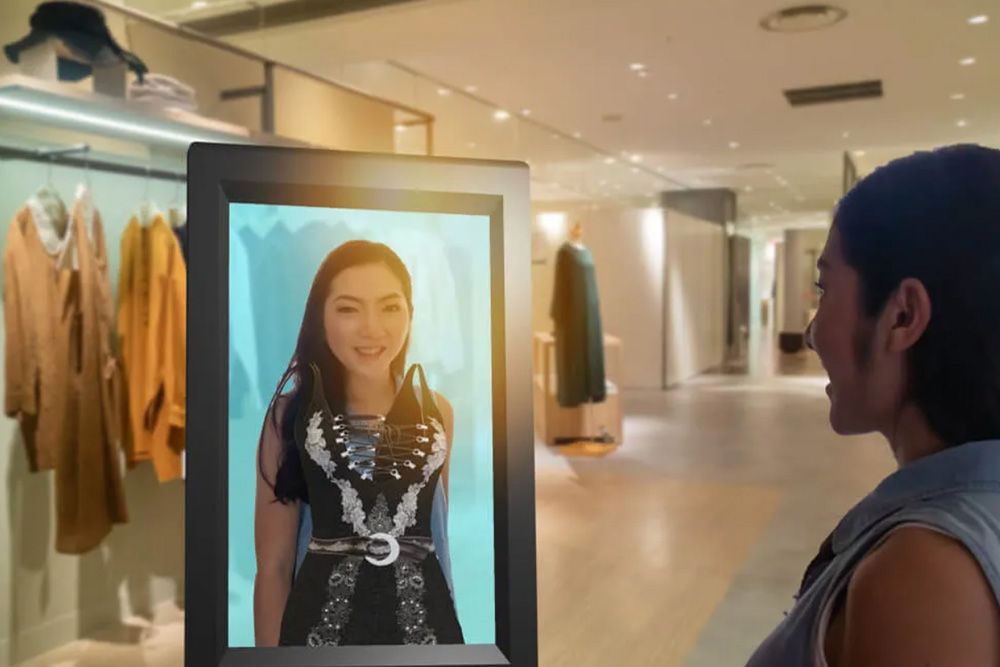Harnessing the Future of Retail: Applications and Advantages of Interactive Retail Displays
Understanding Interactive Retail Displays
Understanding interactive retail displays is about embracing technology to enhance the shopping experience and foster deeper consumer engagement. Gone are the days of simple video loops; today's displays are innovative and multifaceted. They include touchscreens that allow customers to explore products, customize merchandise, and even visualize paint colors in different environments. The integration of online and offline experiences, known as omnichannel or phygital, is also prevalent, with digital native brands partnering with traditional retailers to create immersive in-store experiences. Augmented reality and camera analytics are emerging trends, promising personalized and data-driven insights. These interactive displays not only excite shoppers but also lead to increased brand loyalty and consumer education. The future of retail displays is set to be even more interactive and personalized, leveraging technology to create memorable and informative experiences.
Interactive retail displays are defined as technologically enhanced platforms that provide a more engaging shopping experience. These displays are like portals to a world where shopping transcends mere transactions and evolves into an interactive, personalized adventure. Picture walking into a store, and instead of conventional static shelves, you encounter dynamic displays that respond to your presence. These displays utilize cutting-edge technologies such as augmented reality (AR), virtual reality (VR), and facial recognition, which is a subset of AI technology. The smart sensors in these displays can include technologies like cameras, NFC (Near Field Communication), and RFID (Radio Frequency Identification), all designed to engage customers on a deeper level.
Benefits of Introducing Interactive Retail Displays
Imagine trying on a new outfit without even stepping into the fitting room, thanks to a virtual dressing mirror that superimposes clothes onto your reflection. Or perhaps, you're browsing through a collection of furniture, and the smart display detects your preferences, showcasing complementary pieces and allowing you to virtually place them in your living space for instant visualization.
Moreover, these interactive displays are not merely about showing off products; they intelligently analyze customer behavior and purchase patterns. Through data analytics and AI-driven insights, they can identify the most relevant products for each individual, tailoring the shopping experience to match their unique tastes and interests.
Meanwhile, the true magic of interactive retail displays lies in their ability to strike the perfect balance between personalization and unobtrusiveness. As shoppers explore the store, they receive subtle nudges that feel like serendipitous discoveries rather than intrusive advertisements. When customers approach a particular display, it may showcase relevant add-ons or complementary items, seamlessly integrated into the shopping experience.
This approach not only enhances customer satisfaction but also cultivates a sense of loyalty and excitement. As shoppers become immersed in the engaging atmosphere, they are more likely to spend additional time in the store and make impulse purchases, ultimately leading to increased sales and higher customer retention rates.
Furthermore, the dynamic nature of these displays enables retailers to adapt swiftly to market trends and customer preferences. Promotions and messaging can be instantly updated, keeping the shopping experience fresh and relevant. By aligning with real-time data, retailers can capitalize on trending products or respond to shifting consumer needs promptly.
Applications of Interactive Retail Displays
1. Product Demonstrations and Tutorials
Interactive displays can provide immersive product demonstrations and tutorials. Customers can see how a product works, get answers to common questions, and even virtually experience the product. For example, electronic stores often use interactive displays to let customers explore the features of a new smartphone or gadget.
2. Personalized Shopping Experience
Through the use of data and AI, interactive displays can offer a personalized shopping experience. They can suggest products based on customers' past purchases or browsing behavior, much like online shopping platforms. Retailers such as Sephora have used this approach to provide tailored product recommendations.
3. Virtual Fitting Rooms
One of the most exciting applications of interactive displays is virtual fitting rooms. Using augmented reality, customers can see how clothes, accessories, or cosmetics would look on them without physically trying them on. Stores like Zara and Uniqlo have successfully implemented this technology, enhancing customer experience and reducing returns.
4. Interactive Catalogs and Maps
Interactive displays can serve as digital catalogs, allowing customers to browse the store's entire range with ease. They can also provide interactive store maps, helping customers navigate large stores. IKEA has utilized this feature to help customers locate specific products in their large warehouse-style stores.
5. Point-of-Sale (POS) Systems
Interactive displays can double as POS systems, enabling customers to check out without staff assistance. This self-service approach streamlines the checkout process and reduces queue times, as seen in stores like Apple and Amazon Go.
What Makes
Interactive Retail Displays A Worthy Investment?
1. Enhanced Customer Engagement
Interactive displays have a unique ability to draw customers in and keep them engaged. Unlike traditional signage, interactive displays invite customers to participate actively. Whether it's through watching a product demonstration, personalizing a product, or navigating an interactive store map, these displays turn passive browsing into a more meaningful and immersive experience. By doing so, they're not just displaying information but creating memorable experiences. Studies suggest that customers are 70% more likely to remember a brand if they've interacted with a digital display. The more engaged a customer is, the more likely they are to feel connected to your brand, return to your store, and recommend it to others.
2. Increased Sales
There's a strong correlation between customer engagement and sales. By providing customers with a richer, more engaging, and personalized shopping experience, interactive displays encourage customers to spend more time exploring products in-store. They can easily access detailed product information, view product demonstrations, or even virtually try on products, all of which can increase the likelihood of making a purchase. Additionally, the novelty and convenience of the technology can be a draw in itself, attracting more foot traffic to your store. According to a report from Small Business Trends, interactive displays can boost overall sales by up to 33%.
3. Better Understanding of Customer Behavior
Interactive displays are not just tools for customer engagement; they are also valuable sources of data. Each interaction a customer has with the display can be tracked when integrated with cameras or sensors. Further analysis provides insights into customer behavior, preferences, and buying patterns. For example, if a particular product demonstration is frequently viewed, it might indicate high interest in that product. If customers frequently use the display to find a specific product in the store, it might suggest that the product needs to be more prominently displayed. By harnessing this data, retailers can make more informed decisions about product placement, store layout, inventory management, marketing strategies, and more.
4. Differentiation from Competition
In today's crowded retail landscape, standing out from the competition is crucial. Interactive displays offer a unique way to differentiate your store. By providing an innovative, tech-savvy shopping experience, your store can position itself as a leader in customer experience. This can enhance your brand image, attract tech-savvy customers, and foster customer loyalty. For example, a store that offers a virtual fitting room can position itself as a go-to destination for hassle-free clothes shopping.
5. Enhancing Staff Values
While implementing interactive displays involves an initial investment, they can lead to significant savings over time. By automating certain functions, like product demonstrations, checkout, and customer service inquiries, interactive displays can reduce the need for staff intervention. This can free up staff to focus on other high-value tasks. Moreover, interactive displays can help reduce waste and increase efficiency by digitizing traditional retail elements like paper catalogs and signage.
Future Trends in Interactive Retail Displays
As technology continues to evolve, we can expect to see new applications and enhancements in interactive retail displays. Emerging trends include more sophisticated personalization, integration with mobile apps, and the use of virtual and augmented reality. Staying abreast of these trends will help retailers remain competitive and continue to provide outstanding customer experiences.
As the retail industry continues to evolve, businesses that leverage the power of interactive retail displays will gain a competitive edge. The ability to stay abreast of such technological advances and their innovative applications is no longer a luxury, but a necessity for businesses to succeed in the digital era.
The retail future beckons, inviting us to engage, explore and evolve. Interactive retail displays, combining innovation and interactivity, are a testament to the ongoing evolution of this landscape. The challenge for retailers lies in harnessing these technological advancements to create memorable and efficient shopping experiences that resonate with the contemporary consumer.
The impact and potential of interactive retail displays underscore the fact that retail is not just about transactions, but about creating meaningful and engaging experiences. The future of retail is indeed interactive.





